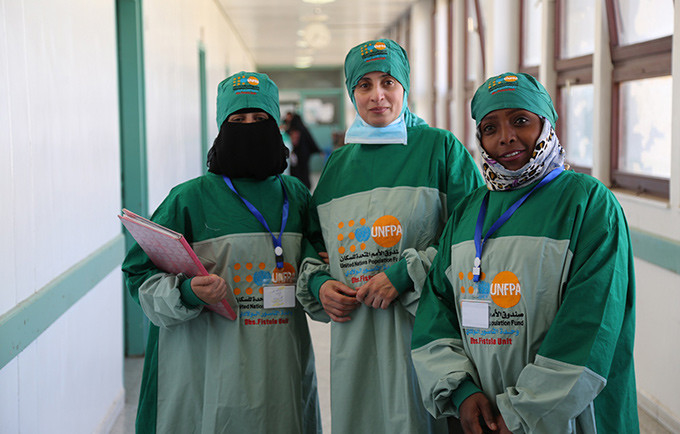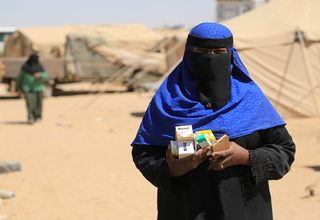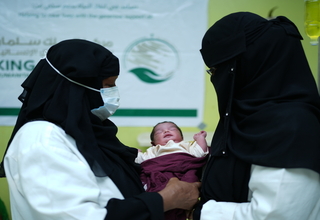An estimated 5.5 million women and girls of childbearing age, have limited or no access to reproductive health services, including antenatal care, safe delivery, post-natal care, family planning, and emergency obstetric and newborn care. One Yemeni woman dies every two hours during childbirth, from causes that are almost entirely preventable.
Over 1.5 million pregnant and breastfeeding women are projected to suffer from acute malnutrition sometime in the course of 2022. They risk giving birth to newborns with severe stunted growth as a result of rising food insecurity. O
In a country with a maternal mortality ratio of 385 deaths per 100,000 live births according to 2015 UN estimates, being the highest rate in the Arab region, the lack of food, eroding healthcare, worsened by epidemics such as cholera and diphtheria, can mean an increase in premature or low-birth weight babies and severe postpartum bleeding.
Less than half of Yemen’s hospitals remain functional with an estimated 11 per cent fully or partially damaged due to the conflict. This is compounded by extreme shortages of essential medicines, supplies and specialized staff, only 1 in 5 of the functioning facilities is able to provide maternal and child health services. Nineteen out of 22 governorates face severe shortages in available maternity beds – less than six beds per 10,000 people, half of the WHO standard. In addition, an estimated 42 per cent of Yemen’s population lives more than one hour away from the nearest fully or partially functional public hospital.
As a result of the precarious security situation and the difficulty of access across the country, reproductive health personnel, commodities and services in health facilities have become much more scarce and difficult for women and girls to reach.
UNFPA is working to strengthen the health systems to provide emergency obestric and neonatal care and other lifesaving reproductive health services to reduce maternal mortality and morbidity.
Key Interventions
- Ensure availability of lifesaving reproductive health commodities, medicines, supplies and equipment in health facilities.
- Ensure qualified health personnel are in place to provide reproductive health services in health facilities.
- Support mobile medical teams and clinics to enable them to provide reproductive health services that include; safe deliveries integrated with nutrition services for pregnant women as well as disease prevention information.
- Make family planning and birth spacing methods available and accessible to people through health facilities and mobile clinics.
- Provide skilled healthcare personnel, particularly midwives, at the community level.
- Lead coordination of reproductive health response through the Reproductive Health Inter-Agency Working Group under the Health Cluster




